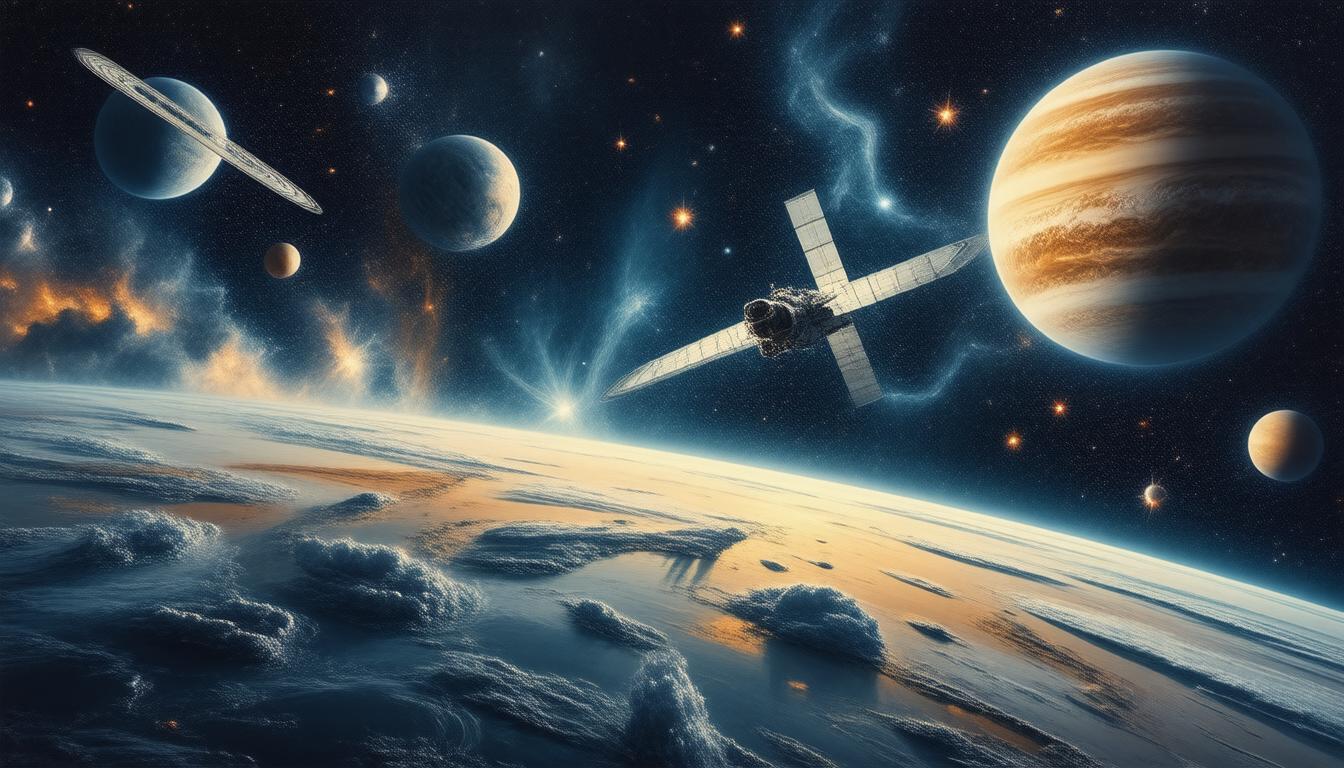Space exploration has always sparked the imagination of humanity. From the first steps on the Moon to exploring distant galaxies, missions undertaken by various space agencies have expanded our understanding of the cosmos. This article highlights some of the most groundbreaking space exploration missions that signify not only technological innovations but also profound discoveries regarding our universe.
The Role of NASA and International Collaborations
NASA, established in 1958, has been at the forefront of space exploration. With a mission to explore both human and robotic spaceflight, NASA has launched numerous missions that have dramatically enhanced our scientific knowledge. International cooperation has been crucial, especially regarding the operations aboard the International Space Station (ISS), which has continuously housed astronauts since November 2, 2000. ### The Hubble Space Telescope: A Window to the Universe
Launched in 1990, the Hubble Space Telescope has fundamentally changed our understanding of the universe. Its powerful cameras have captured imagery of distant galaxies, nebulas, and planetary atmospheres, allowing scientists to peer back in time to the formation of the universe. The telescope has also enhanced our understanding of dark energy and the expansion of the cosmos.
The James Webb Space Telescope: Next-Generation Astronomy
In contrast, the recently operational James Webb Space Telescope offers a new perspective with its advanced infrared capabilities. Webb aims to investigate the formation of the first galaxies and explore dust clouds where stars are being born. This mission is expected to revolutionize our comprehension of cosmic evolution over the next decade.
Pioneering Missions to Mars
Mars exploration has captivated scientists and the public alike. Notable missions include NASA’s Perseverance rover, which landed on Mars in February 2021. This state-of-the-art rover, equipped with advanced scientific instruments, is geared towards studying the planet’s geology and seeking signs of past microbial life. Its companion, the Ingenuity helicopter, has demonstrated the ability to fly in the thin Martian atmosphere, marking the first powered flight on another planet.
In addition to Perseverance, NASA has sent several rovers, such as Spirit, Opportunity, and Curiosity, each contributing uniquely to our knowledge about Mars’ surface and atmosphere.
Future Mars Missions and the Artemis Program
Looking forward, NASA’s Artemis program symbolizes a bold return to lunar exploration, laying foundational work for future missions to Mars. Artemis II, set to carry astronauts around the Moon, is a critical test for the agency’s deep-space goals. Success in this endeavor could pave the way for human habitats on Mars by the late 2020s.
The Parker Solar Probe: Touching the Sun
The Parker Solar Probe, launched in 2018, is another remarkable mission aimed at understanding the Sun by flying into its outer atmosphere, the corona. It is the closest any spacecraft has ever traveled to the Sun, collecting data that helps scientists comprehend solar wind, solar storms, and their impacts on space weather.
Mission Diversity: Beyond Human Exploration
Space missions encompass various types, from planetary landers and orbiters to asteroid deflection and Earth observation missions. The Juno mission to Jupiter aims to reveal the planet’s composition and origin, while missions like OSIRIS-REx have recently returned samples from asteroid Bennu, promising insights into the solar system’s early conditions.
Advancements in Small Satellite Technology
The proliferation of small satellites, or CubeSats, has revolutionized research capabilities, allowing for cost-effective launches and innovative experiments in space. Programs like the Small Spacecraft Technology program highlight the potential of these small but powerful devices.
Conclusion
The drive for space exploration continues to evolve, marked by innovative technologies and ambitious missions that strive to answer fundamental questions about our universe. From observing the birth of stars to preparing humanity for life on Mars, these missions exemplify humanity’s quest for knowledge. As we venture further into the cosmos, each leap forward in technology unlocks new mysteries, inspiring generations to look beyond our planet and into the vast, uncharted territories of space.
Join Alpha Centi and give a unique boost to your career and professional profile today! [color=rgb(4, 53, 157)]https://alphacenti.org/join/[/color]


